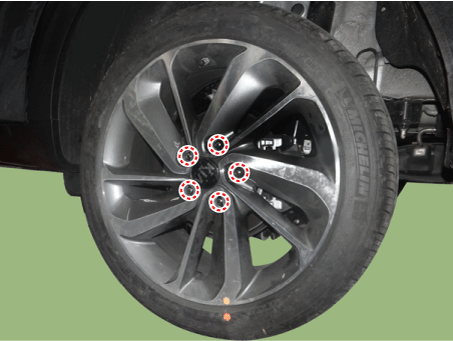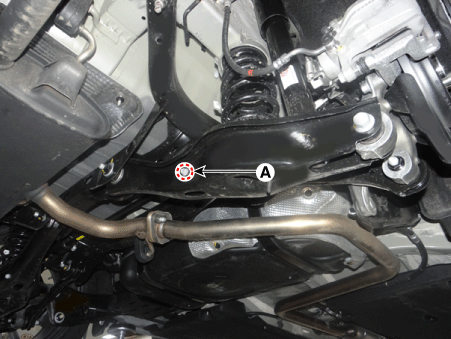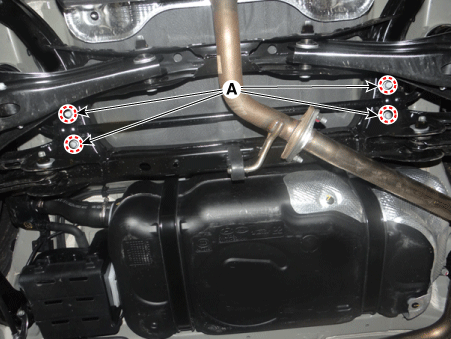Kia Niro: Rear Suspension System / Rear Stabilizer Bar Repair procedures
| 1. |
Disconnect the battery negative cable.
|
| 2. |
Remove the wheel and tire.
|
Tightening torque:
107.9 - 127.5 N·m (11.0 - 13.0 kgf·m, 79.6 - 94.0 lb·ft)
|

|
Be careful not to damage the wheel nuts when removing the wheel
and tire.
|
|
| 3. |
Loosen the rear stabilizer link bolt (A).
|
Tightening torque:
19.6 - 29.4 N·m (2.0 - 3.0 kgf·m, 14.5 - 21.7 lb·ft)
|

|
Set up the transmission jack under the lower arm in order to
remove the shock absorber in no-load condition.
|
|
| 4. |
Loosen the bolts (A) and then remove the rear stabilizer bar.
|
Tightening torque:
44.1 - 53.9 N·m (4.5 - 5.5 kgf·m, 32.5 - 39.8 lb·ft)
|

|
| 5. |
Install in the reverse order of removal.
|
| 1. |
Check the rear stabilizer bar for deformation.
|
| 2. |
Check the rear stabilizer link ball joint for damage.
|
Removal
1.
Disconnect the battery negative cable.
2.
Remove the wheel and tire.
Tightening torque:
107.9 - 127.5 N·m ( ...
Removal
1.
Disconnect the battery negative cable.
2.
Remove the wheel and tire.
Tightening torque:
107.9 - 127.5 N·m ( ...
 Rear Upper Arm Repair procedures
Rear Upper Arm Repair procedures Rear Assist Arm Repair procedures
Rear Assist Arm Repair procedures



